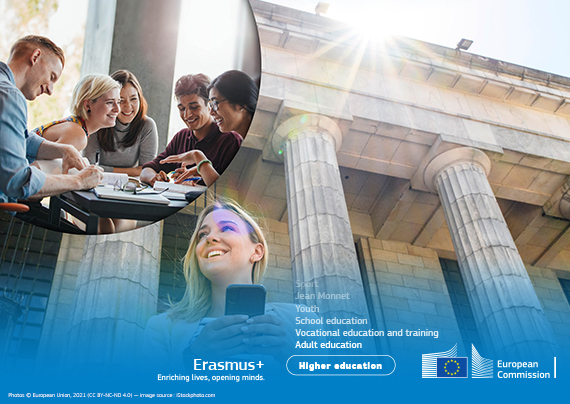Online info session: Erasmus Mundus Action 2024 (europa.eu)
On 15 November, the European Culture and Education Executive Agency (EACEA) together with the European Commission organized an information webinar on the new Erasmus Mundus call (Joint Master’s Programs and Proposal Support Measures).
Main objectives of Erasmus Mundus
The aim of both Erasmus Mundus events is to create excellent international study programs and thus improve the position of the European higher education area on a global scale, support research cooperation and increase intercultural understanding of staff and students. Within Erasmus Mundus, it is possible to apply for a grant in two types of projects: Joint Master’s programs (Erasmus Mundus Joint Masters – EMJM) and Design Support Measures (Erasmus Mundus Design Measures – EMDM). Joint Master’s programs have a larger budget and more complex management and administration, while Proposal Support Measures were created in 2021 to allow more HE institutions from more geographical areas to participate in Joint Master’s programs. The projects are independent of each other – there is no need to submit an EMDM for the consortium to receive the EMJM, and at the same time, receiving an EMDM grant does not mean automatic success in the EMJM .
In terms of statistics, EACEA representatives said that in EMDM the number of applications submitted in the 2023 call increased by 20% compared to the 2022 call . The purpose of this type of project seems to be fulfilled, as 18 EMDM projects out of a total of 35 selected applied for EMJM and 5 of them succeeded. At the same time, it appears that the involvement of higher education institutions from less represented member states and non-EU countries has increased.
Erasmus Mundus Proposal Support Measures (EMDM)
During the webinar, EACEA representatives explained that this type of project is intended for consortia that are interested in Erasmus Mundus Joint Master’s programs , but which are not yet fully prepared (they do not have a completed accreditation process and set up common student selection procedures or common student services). This type of project targets higher education institutions from under-represented member states and non-EU countries or under-represented thematic areas. EACEA representatives therefore recommended that those interested in EMDM first look at the Erasmus Mundus Catalogue, where it is possible to filter which countries and which topics are most represented.
The EMDM project lasts 15 months, it is a single-beneficiary grant (unlike EMJM) in the pre-given amount of 60,000 euros , which is 5,000 euros more than in last year’s call. The grant can cover, for example, the costs associated with the accreditation of a joint program or the costs of employees. The budget of the 2024 call for EMDM is approx. 3 million and 55 projects are expected to be selected.
Erasmus Mundus Joint Masters Programs (EMJM)
EMJM projects are more complex than EMDM, already when applying for a grant, the consortium must have an accredited common program and set common procedures for selecting students, monitoring the implementation of the program, etc. The condition of EMJM is that during the grant period (74 months), the consortium must accept at least four years students and the master’s program must start no later than one year after the grant agreement is signed. All students must go to a partner foreign university (to a country other than their country of residence) for at least two semesters. The grant is calculated on the basis of three items: institutional costs (max. amount 1,800,000 euros), scholarships (max. 2,016,000 euros, max. for 60 students) and individual needs (max. amount 120,000 euros).
In the 2024 call, the total budget is 127 million euros and 32 projects are expected to be selected. The main changes compared to last year are the limitation of scholarships from the NDICI and IPA II instruments (which are beyond the 60 EMJM scholarships) to a maximum of 20 scholarships . EACEA representatives also emphasized that projects that have already been supported in the past can apply for another grant one year before the end of the original grant. Projects that end in 2025 can apply for the 2024 call.

